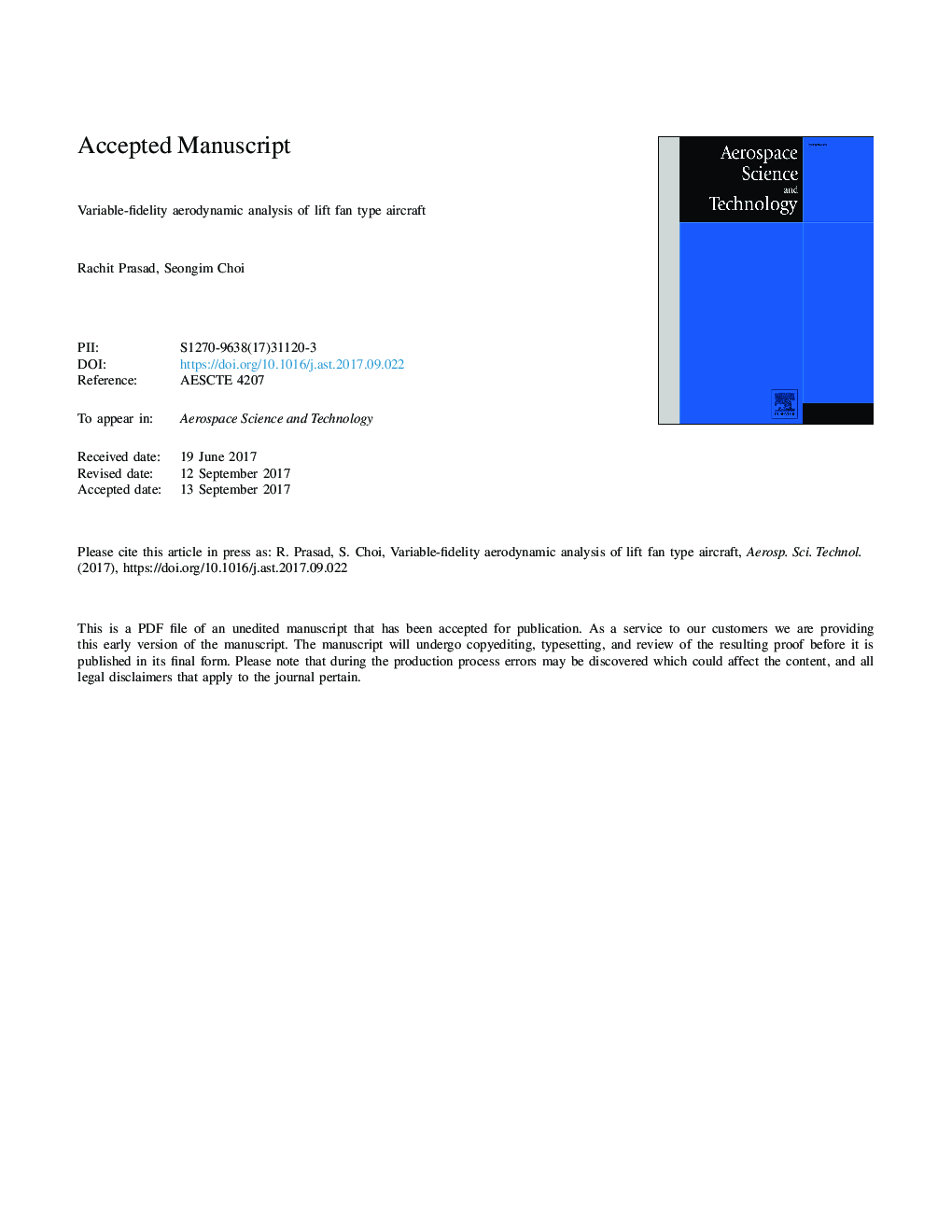| کد مقاله | کد نشریه | سال انتشار | مقاله انگلیسی | نسخه تمام متن |
|---|---|---|---|---|
| 8058408 | 1520063 | 2017 | 38 صفحه PDF | دانلود رایگان |
عنوان انگلیسی مقاله ISI
Variable-fidelity aerodynamic analysis of lift fan type aircraft
ترجمه فارسی عنوان
ارزیابی آیرودینامیکی متغیر با وفاداری نوع هواپیما نوع بالابر
دانلود مقاله + سفارش ترجمه
دانلود مقاله ISI انگلیسی
رایگان برای ایرانیان
موضوعات مرتبط
مهندسی و علوم پایه
سایر رشته های مهندسی
مهندسی هوافضا
چکیده انگلیسی
In this paper, an efficient aerodynamic analysis framework is developed for the conceptual design of lift-fan type aircraft. The lift-fan type aircraft includes and uses a rotor in the body or wing for vertical takeoff and landing, and flies differently from a rotorcraft in cruise/forward flight. Since the lift-fan type aircraft can fly like a fixed wing vehicle during cruise past the transition flight phase, it is possible to overcome the range and velocity limits of conventional rotorcraft. To investigate a wide range of design options during the conceptual design, rapid analyses of various design candidates are significant as high-fidelity analysis may be too expensive. A cost-efficient, lift-fan aircraft aerodynamic analysis (LFAAA) method is developed which consists of a linear potential flow solver with viscous correction, the Blade Element Momentum Theory (BEMT), a Power Induced Effects (PIE) module and momentum drag correction. The greatest advantage of the LFAAA method is low computational cost with considerable solution accuracy as long as the flow conditions are in relatively linear regions, by which the individual component analysis method is derived. Wind-tunnel data of various geometries including an isolated propeller of a UAV, Lockheed Martin innovative control effector (ICE), and YAV-8B Harrier II aircraft are used to validate each component of the LFAAA method, respectively. For the validation of the LFAAA method for comprehensive analysis, a complete geometry of NASA's 1/8 scale model of fan-in-wing (FIW) aircraft is solved and the computation results are validated with the existing wind-tunnel data and unsteady RANS computations. Results predicted by the LFAAA method show good agreements with high-fidelity URANS and wind-tunnel data over the linear flow regimes where no flow separation is observed.
ناشر
Database: Elsevier - ScienceDirect (ساینس دایرکت)
Journal: Aerospace Science and Technology - Volume 71, December 2017, Pages 636-650
Journal: Aerospace Science and Technology - Volume 71, December 2017, Pages 636-650
نویسندگان
Rachit Prasad, Seongim Choi,
